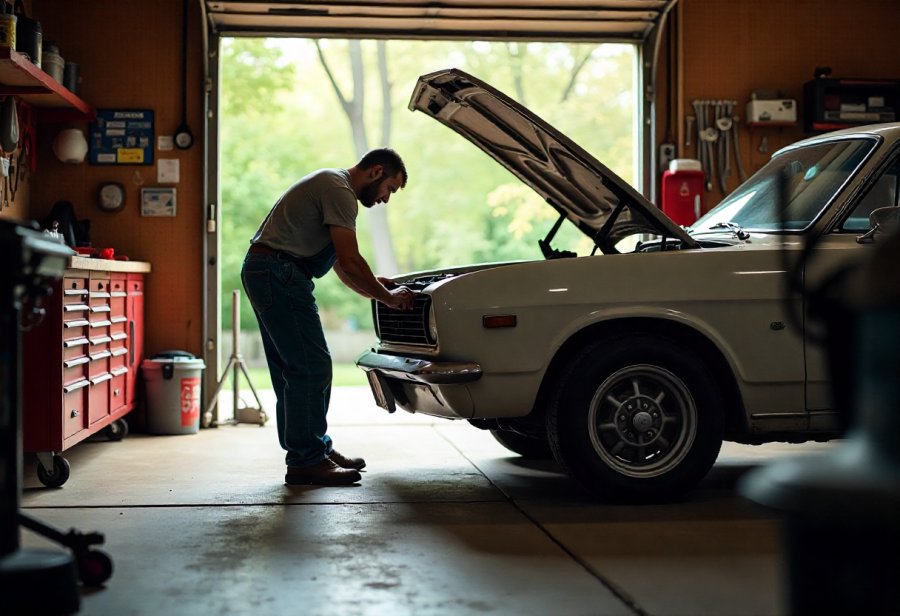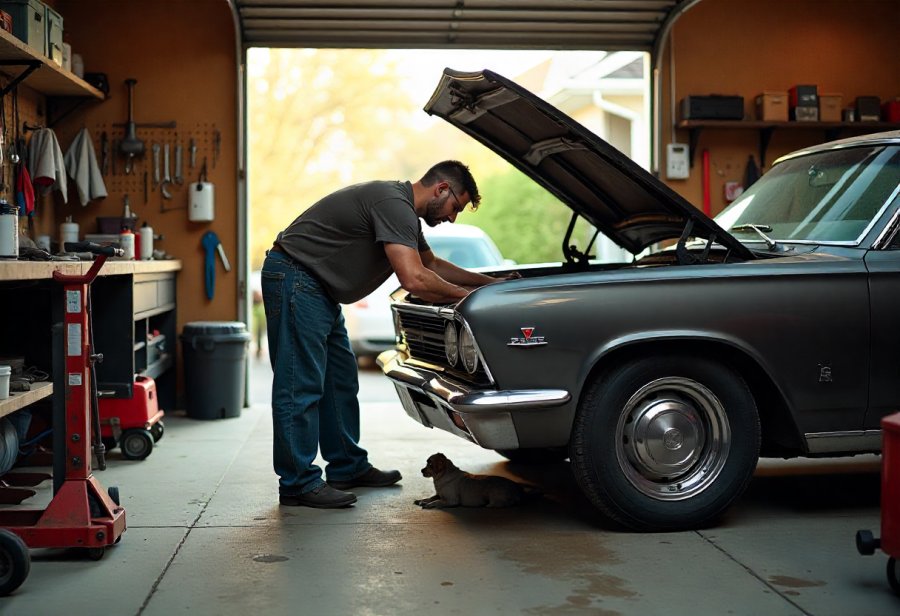Learning to drive symbolizes a pivotal step toward independence for teens, blending achievement with overwhelming nerves and self-doubt. While the outward confidence grows with experience, inside many teens battle ongoing fears of losing control or making mistakes—an internal struggle that persists even after they earn their license. This emotional rollercoaster highlights that confidence isn’t static; it fluctuates depending on circumstances and internal doubts. Supporting teens through patience, positive reinforcement, and gradual exposure helps transform nervousness into resilience. Recognizing that anxiety and self-assurance coexist fosters a more empathetic approach, allowing teens to manage fears while building genuine self-trust. But does mastering the road truly mean overcoming the internal hurdles of insecurity? This journey isn’t just about mechanics; it’s about navigating a complex emotional landscape—one that shapes resilient individuals capable of facing life’s uncertainties with calm confidence.

Stepping into Independence: The Emotional Triumph of Learning to Drive
Learning to drive is a major milestone in teenage development, marking the moment when independence truly begins to take shape. For many teens, that first time behind the wheel feels like stepping into a new world—an exciting leap toward greater freedom and responsibility. It’s a moment that they and their families celebrate, often seen as a rite of passage that signals they’re moving closer to adulthood. The sense of achievement is real, and the excitement of exploring new places makes the journey memorable.
But beneath the surface of this milestone lies a complex web of emotions. Teens often experience a mix of eagerness and nerves, confidence and doubt, all at once. Sitting behind the wheel for the first time can trigger butterflies, as they realize just how much responsibility is involved. Every decision—whether to accelerate, brake, or turn—feels weighty, and the pressure to perform well can be overwhelming. These feelings, while normal, highlight how learning to drive is about more than just mastering mechanics; it’s about navigating a new emotional landscape.
This pivotal moment also shapes their sense of self. As teens gain more control on the road, they start to see themselves as independent individuals capable of handling real-world challenges. Each successful trip, whether it’s driving home from school or navigating a busy intersection, reinforces their growing confidence. At the same time, it’s natural for internal doubts to linger—fears of making mistakes or losing control. Recognizing that these conflicting feelings are part of the process helps teens and their support systems approach driving as a journey of personal growth, not just skill acquisition.
The road to independence through driving is as much about internal development as external achievement. It’s a gradual process of building trust in oneself while managing the nerves that come with new responsibilities. Every trip, every challenge, is an opportunity to learn resilience. With patience and encouragement, teens discover that confidence isn’t about never feeling nervous but about learning to move forward despite those feelings. That internal shift from fear to trust is what transforms nervous teens into capable, confident drivers ready to face the open road—and life beyond.
Navigating Inner Turmoil: The Emotional Landscape of Teenage Driving Anxiety
Learning to drive is as much an emotional journey as it is a technical skill. For teenagers, the experience often comes with a rollercoaster of feelings—excitement, pride, but also anxiety and self-doubt. Many young drivers feel eager to gain independence but are simultaneously overwhelmed by the responsibility of being behind the wheel. Navigating traffic, obeying rules, and handling unexpected situations can trigger a wave of worries about making mistakes or losing control, even after they’ve spent hours practicing.
Confidence might seem like the main goal, but the reality is more nuanced. Teens often wrestle with specific fears, such as being judged by peers, causing an accident, or simply handling unfamiliar roads. These worries don’t disappear with experience; instead, they can linger, subtly undermining their sense of competence. This internal tug-of-war—showing calm outwardly but feeling nervous inside—is a normal part of the learning process. It’s a sign that while they’re gaining skills, they’re also working through emotional hurdles that come with new responsibilities.
The internal struggle between confidence and anxiety is persistent. Even seasoned teen drivers can feel nervous in challenging conditions—like heavy rain or rush hour—despite appearing composed. Confidence isn’t a fixed trait; it fluctuates depending on the situation and emotional state. Teens may project confidence on the surface but still harbor fears of losing control. Recognizing that these feelings often exist side by side helps us understand that nerves are a natural part of growth, not a sign of failure or inadequacy.
Supporting teens in managing this internal conflict involves helping them develop self-awareness and resilience. Techniques like deep breathing, positive self-talk, and gradual exposure to complex driving scenarios can help them stay calm and focused. When teens understand that feeling nervous is normal, they’re less likely to be discouraged by setbacks. Instead, they see these moments as opportunities to learn and grow, reinforcing that confidence isn’t about never feeling anxious but about learning to move forward despite it.
Ultimately, understanding the emotional landscape of teen drivers reveals that confidence and nerves are intertwined. Growth happens as teens learn to accept their fears and doubts as part of the process, rather than obstacles to overcome. This acceptance fosters resilience, allowing them to handle both the physical demands of driving and the emotional challenges of independence. Recognizing and normalizing these feelings helps teens develop a balanced sense of self-trust, paving the way for confident, responsible driving—and a stronger foundation for facing life’s broader uncertainties.

The Inner Battle Revealed: Confidence and Anxiety Clash Behind the Wheel
Even when teens appear confident behind the wheel, an internal battle often continues beneath the surface. Outwardly, they might handle busy intersections or highway merges with a calm, composed demeanor, but inside, nerves and self-doubt can still simmer quietly. This gap between their exterior and internal feelings creates a common and natural disconnect—teens may seem in control, yet secretly worry about losing it all or making a costly mistake. This internal conflict is a normal part of the learning process, reflecting the complex journey toward independence.
This struggle often stems from high personal standards and the pressure to prove their readiness. Teens want to be seen as capable, yet many still question their abilities deep down. Past mistakes, fears of causing harm, or worries about peer judgment fuel these doubts. The internal voice of worry can persist even as they handle demanding situations, chipping away at their confidence from within. They’re caught in a balancing act—trying to project calmness while dealing with fears that threaten to undermine it.
This contradiction doesn’t vanish once they gain some experience. Even seasoned teen drivers can feel a surge of nerves during unfamiliar or stressful conditions, like heavy rain or rush-hour traffic, despite outward appearances. Confidence isn’t a fixed trait; it fluctuates depending on the situation and emotional state. Teens may seem composed but still harbor fears of losing control. Recognizing this ongoing internal tension helps us understand that nerves are not signs of inadequacy—they’re part of the growth process.
Supporting teens in managing this internal conflict involves fostering awareness and resilience. When they learn to recognize their nervous feelings without shame, they can employ techniques like deep breathing or positive self-talk to stay focused. Viewing nerves as a normal component of learning instead of a failure helps build patience and persistence. Over time, repeated exposure to challenging scenarios gradually transforms those nerves into familiarity, making confidence more stable and genuine.
This internal struggle shapes how teens approach new challenges—sometimes with hesitation, sometimes with over-caution. Even after earning their license, many continue to second-guess decisions or avoid complex driving conditions. These lingering fears aren’t signs of weakness but evidence that emotional growth is ongoing. Normalizing these feelings encourages teens to see setbacks as part of their journey, rather than as proof they’re not ready.
As they develop the ability to accept their doubts and fears, teens build resilience—trusting themselves even when nerves resurface. This emotional strength becomes just as vital as technical skill, helping them navigate both the roads and the uncertainties of life. Recognizing that confidence includes managing internal doubts allows teens to face challenges with patience and self-awareness. In this way, the internal conflict becomes a foundation for genuine independence and self-trust.
For parents and instructors, understanding this ongoing internal battle is crucial to providing the right support. Encouraging teens to explore resources that address both the emotional and technical aspects of driving can make a significant difference. One valuable resource is Teen Driver Safety Tips, which offers practical advice on building confidence and managing anxiety behind the wheel.
Turning Emotions into Growth: Supporting Teens Through Their Driving Journey
Understanding the emotional struggles teens face while learning to drive can significantly influence how we support their growth both on and off the road. When parents and instructors recognize that nerves, self-doubt, and fear are normal parts of the process, they can foster a more empathetic environment that encourages patience and reassurance. Creating opportunities for teens to practice in calmer settings, like quiet residential streets, helps them build confidence gradually and reduces the pressure they feel. Celebrating small wins along the way reinforces their progress and reminds them that setbacks are part of learning, not signs of failure.
In everyday driving, teens encounter numerous chances to confront their fears and develop resilience. Routine trips to the store or school allow them to apply their skills in familiar, controlled environments. Repeating these trips consistently helps turn initial nerves into familiarity, gradually boosting their comfort level. When teens experience regular success, their confidence naturally grows, making it easier to handle more complex situations. Recognizing that progress isn’t always linear encourages a mindset of persistence and patience, which is crucial for long-term growth.
Support from structured programs and guidance from experienced instructors further enhances this emotional development. Professional lessons provide a safe space to practice, receive constructive feedback, and gradually tackle more challenging scenarios. At home, parents can foster a positive atmosphere by setting realistic expectations and emphasizing effort over perfection. A supportive environment where mistakes are seen as learning opportunities helps teens feel safe to explore and push their boundaries without fear of judgment, making the journey toward independence more secure and enjoyable.
Research highlights that confidence isn’t solely about hours behind the wheel but also about how teens manage their internal emotions. Techniques like deep breathing, visualization, and positive self-talk empower them to stay calm during stressful moments. Layering these mental tools with repeated exposure to different driving conditions helps transform nerves into confidence. When teens learn to regulate their emotional responses, they become better equipped to handle real-world challenges, both on the road and in life.
Even after earning their license, many teens continue to face internal doubts—hesitancy in unfamiliar conditions or second-guessing decisions. Normalizing these ongoing feelings helps them see that internal struggles are part of the growth process, not signs of inadequacy. Open conversations about fears and setbacks foster resilience and self-awareness, reinforcing that confidence is built through persistence and self-compassion. Supporting teens in accepting their emotional landscape encourages them to trust themselves more deeply and face future challenges with a balanced mindset.
By understanding and addressing the emotional struggles teens experience during driver training, we help shape not only safer drivers but also more confident, resilient individuals. Recognizing nerves as a natural part of growth allows us to guide them with empathy and patience, turning each challenge into a stepping stone. This approach nurtures internal strength that extends beyond the driver’s seat—preparing teens to navigate both roads and life’s uncertainties with self-trust and calm resilience.

Beyond the Road: Reflecting on the Emotional Voyage of Teen Drivers
Learning to drive is much more than just acquiring a new skill; it’s a deeply emotional journey that teens navigate quietly and often alone. Behind the outward signs of confidence—handling traffic, making quick decisions—lie ongoing internal struggles like self-doubt, anxiety, and the fear of making mistakes. These feelings can coexist with moments of achievement, creating a complex picture of independence in progress. Recognizing that confidence and nerves often go hand in hand helps us understand that building genuine self-assurance takes time, patience, and a supportive environment.
Many teens may appear confident on the surface, but inside, they’re often battling fears of losing control or causing harm. This internal conflict doesn’t vanish once they gain experience; it can persist in different forms, especially in unfamiliar or stressful situations. It’s common for teens to second-guess their decisions or hesitate more than necessary, even after earning their license. Acknowledging these internal doubts as part of growth, rather than signs of failure, allows them to see setbacks as natural steps forward.
Supporting teens through this emotional landscape means fostering patience and understanding. When parents, instructors, and peers see nerves as a normal part of learning, they create a more empathetic space that encourages persistence. Celebrating small victories—like merging onto a busy highway or parking in a tight spot—reinforces their progress and helps turn initial fears into confidence. Repeated exposure to diverse driving scenarios gradually transforms nerves into familiarity, strengthening both skill and emotional resilience.
This internal struggle shapes how teens approach challenges beyond the driver’s seat. Even after becoming licensed, many continue to experience moments of hesitation or over-caution rooted in lingering fears. These feelings are not signs of weakness but evidence that emotional growth is ongoing. Normalizing these doubts helps teens develop a healthier perspective on their abilities, fostering self-trust and a balanced sense of confidence. Over time, learning to accept and manage these internal doubts becomes a foundation for responsible independence.
As teens learn to embrace their nerves and uncertainties, they develop resilience that extends well beyond the road. This inner strength—built through patience, self-awareness, and persistence—becomes crucial in facing life’s broader challenges. Confidence is no longer about never feeling anxious but about trusting oneself to move forward despite those feelings. This balance between vulnerability and trust creates individuals better equipped to handle both typical stresses and unexpected setbacks.
Looking back, it’s clear that the emotional work involved in learning to drive mirrors larger life lessons. Overcoming fears, managing doubts, and celebrating progress teach resilience, patience, and self-compassion—qualities that shape responsible, confident adults. Recognizing that nerves are a natural part of growth transforms the journey into a meaningful process of self-discovery. Supporting teens in this way not only helps them become safer drivers but also prepares them to navigate the complexities of life with grace and inner strength.







